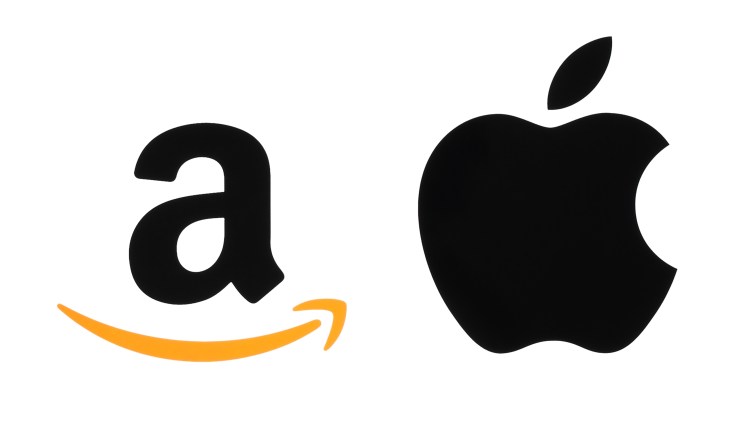Apple’s latest raft of iPhones comes just a month after it became the first US company to be valued at a trillion dollars. Given the ups and downs in Apple’s 42-year history, it’s an incredible feat. It’s made no less remarkable by the fact that Amazon, at the comparatively tender age of 24, followed suit this month, also reaching the trillion-dollar valuation milestone.
The tech behemoths have some things in common: both are West Coast-founded, US tech-first businesses, built on the premise that they can make life significantly easier for their customers. Both have become ubiquitous and grown far beyond their original propositions. But there the comparisons end.
Amazon and Apple have taken two markedly different approaches to solving customers’ problems. For Apple, aesthetic is the guiding principle, growing a brand by creating beautiful, desirable products – be it a watch, a phone, a computer, or software. Most months when a new ‘brand index’ polls people about the brands they love, Apple is right near the top of the list.
So too is Amazon, but for very different reasons. Amazon takes its name from the biggest river in the world in both length and volume and, as a business, size and scale has certainly been a focus. Even as its revenue has soared above the $100 billion mark, its net income has remained marginal as it has sought to invest in creating the largest distribution ecosystem in the world. Content, drones, home speakers, cloud services to business, even salad – you name it, Amazon wants to bring it to you. It’s a golden example of a business that realized it wasn’t about its products, it was about the experience it offered.
June 5th: The AI Audit in NYC
Join us next week in NYC to engage with top executive leaders, delving into strategies for auditing AI models to ensure fairness, optimal performance, and ethical compliance across diverse organizations. Secure your attendance for this exclusive invite-only event.
The area Amazon truly trailblazed was personalization. Today, AI runs through the veins of everything Amazon does. Yet even in its early days it was relentlessly investing in improving its automation and efficiency, suggesting the right products to the right customers at the right time, and ensuring it reached them in good time. Others had far more beautiful websites and design, but Amazon was an early adopter of such technologies as one-click ordering. To contrast the two, Amazon is the ugly step-sister of Apple’s crusade to make the humdrum beautiful.
So where are we now? Apple and Amazon are both incredible companies, with ‘stuff people want’ (beauty and efficiency, respectively) at their core. Yet Apple’s new products have – for some time now – become about incremental improvement and putting design above practicality. I’m not sure I’m over losing my iPhone’s headphone jack yet, but I’m getting there. For as long as they’re beautiful and seamless, Apple’s products will remain top of people’s wish lists. But I’d argue the company’s growth is limited by its own ambition. Will there be another iPhone 1, the invention that draws gasps when it’s announced at a keynote? Probably, but I wonder if it’ll come from Apple.
Amazon’s future, by contrast, looks to be about continuous large-scale improvement. The moment will come when it re-invests less and enjoys profit growth befitting its size. For Amazon, the $2 trillion mark probably isn’t too far away: it’s taken far less time to reach this valuation milestone than Apple, and has a stronger pipeline of innovation ahead of it. In that respect, it’s far more significant for all of us, owing to one simple fact.
Amazon’s focus on the customer and not the product means it can move into almost any sector it wants to. Unlike Apple, it has the power and inclination to turn its attention to new product categories and markets as well as the darker corners of the business supply chain and virtually reinvent them overnight. I can imagine Amazon making further significant investments in logistics, data science, and health tech, to name a few.
I would have said the sky is the limit for Amazon, but now Jeff Bezos is literally reaching for the stars with Amazon’s space program. When Amazon finally conquers the universe with a fleet of warp-speed intergalactic delivery drones, Apple may still be quietly rolling out the iPhone 3076 XS — now with a “new” headphone jack. Their two ambitions are a trillion miles away from their shared valuations.
The hipsters will keep queuing up outside Apple, but if Amazon can bring me the content, products, and services I want, all with the same focus on giving me personalized suggestions for things they know I need and want, then they are deservedly set to become the Buy n Large conglomerate of Pixar’s Wall-E. And if Amazon Go is a blueprint for the future, there’ll be no need to queue …
Mark Ellis is Managing Director at digital agency SYZYGY.

